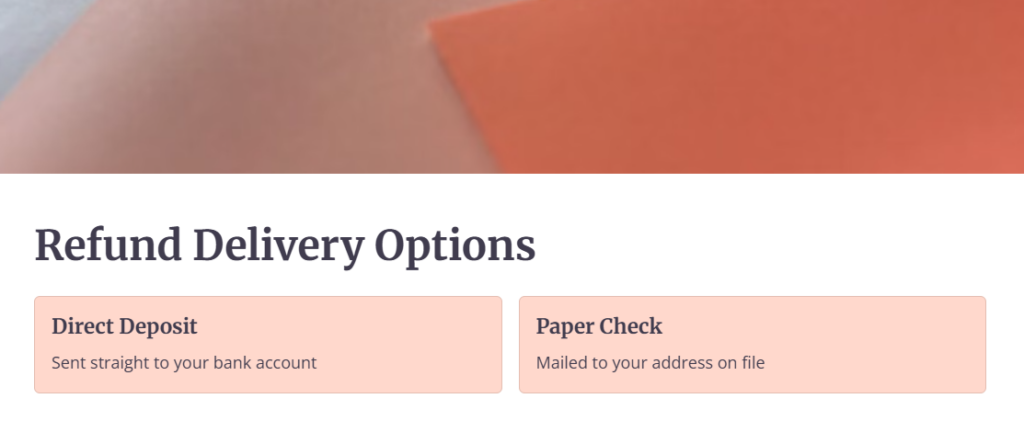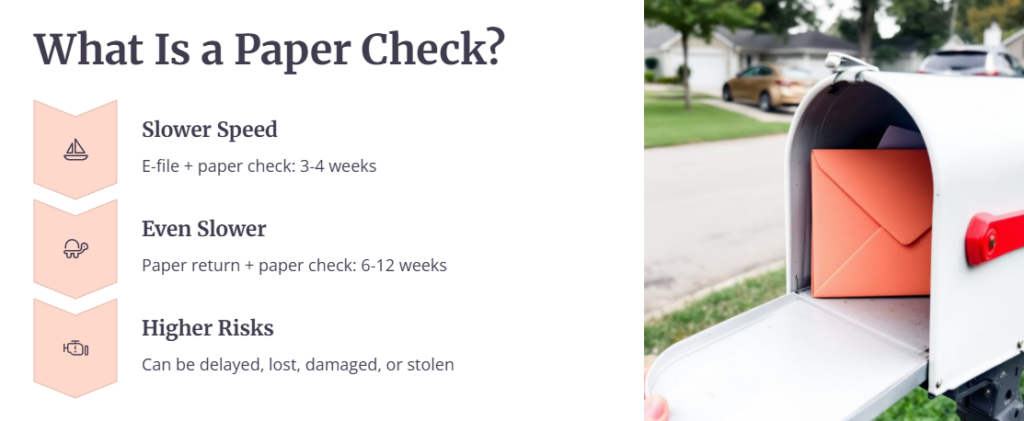Waiting for your tax refund? The method you choose—direct deposit or paper check—can make a huge difference in how quickly you get your money.
Every year, millions of Americans file their taxes and anxiously await their refund. But while the IRS typically issues refunds within 21 days, how you choose to receive your refund can shorten—or significantly delay—that timeline.
So, which is faster: direct deposit or paper check? Let’s break it down.
Explore more in this After-Filing IRS Series →
After You File: IRS Refunds, Notices, and Audits (Coming Soon)
├─ IRS Refund Tracker Guide, Avoid Delays
├─ Why Is Your Tax Refund Delayed
├─ ✅ Direct Deposit vs Paper Check: Which Is Faster(You are here)
├─ Tax Refund Smaller Than Expected? What to Do Next
├─ How to Respond to an IRS Letter or Tax Notice
├─ 5071C, 4883C, 5747C: IRS Identity Theft Victim?
├─ Got a CP2000 Notice From the IRS? What It Means and Exactly How to Handle It
├─ Disagree with an IRS Notice? How to Appeal with Sample
└─ What Triggers an IRS Audit? 7 Common Red Flags
🧾 First, What Are Your Refund Delivery Options?
When you file your federal tax return, the IRS offers you two main ways to get your refund:
- Direct Deposit – sent straight to your bank account
- Paper Check – mailed to your address on file
Both methods are available regardless of whether you file electronically or by mail, but they come with different speeds, risks, and convenience levels.

💳 What Is Direct Deposit?
Direct deposit is the IRS’s preferred method of refund delivery. Instead of printing and mailing a check, the IRS sends your refund electronically to your bank account.
🏁 Speed:
- Average time: 10–21 days after e-filing
- Some refunds are received in as little as 7–10 days if there are no errors
🔒 Security:
- Much safer than a check — it can’t get lost or stolen
- No need to wait by the mailbox or visit a bank
⚙️ How to Set It Up:
When filing your taxes (whether through software or with a tax professional), just enter:
- Your bank’s routing number
- Your checking or savings account number
- Confirm account type and verify twice to avoid misdirected funds
✅ You can even split your refund into multiple accounts (checking, savings, IRA, etc.) using IRS Form 8888.

✉️ What Is a Paper Check?
Paper checks are still an option, but they’re slower and carry more risk.
🐌 Speed:
- E-file + paper check: 3–4 weeks
- Paper return + paper check: 6–12 weeks or longer
❗ Risks:
- Mailed checks can be delayed, lost, damaged, or even stolen
- Refunds sent to old or incorrect addresses often take much longer to resolve
📬 If you moved recently and didn’t update your address, your check may be returned to the IRS and require additional steps to resend.

🧾 What IRS Says
The IRS strongly encourages taxpayers to choose direct deposit.
“The fastest way to get your refund is to file electronically and choose direct deposit.”
More than 90% of tax refunds are now issued via direct deposit.
🏦 How to Set Up Direct Deposit
To use direct deposit when filing your taxes, you’ll need:
- Routing number (from your bank)
- Account number (checking or savings)
- Optionally, you can split your refund across multiple accounts using Form 8888
⚠️ Common Mistakes That Delay Refunds (No Matter the Method)
Even if you choose direct deposit, mistakes during the filing process can cause delays:
- Incorrect account or routing numbers → Refund gets rejected or sent to the wrong person
- Name doesn’t match the account holder → Refund gets kicked back
- Missing or incorrect banking info → Refund defaults to a paper check
- Filing errors or incomplete returns → Delays refund processing for weeks
💡 Tip: Use the “Preview” or “Review” features in tax software to verify direct deposit info before submitting.
🧠 Which One Should You Choose?
| Method | Speed | Security | Convenience | Risk of Delay |
|---|---|---|---|---|
| Direct Deposit | ✅ Fastest | ✅ High | ✅ Very High | 🔽 Low |
| Paper Check | ❌ Slower | ❌ Lower | ❌ Lower | 🔼 High |
If speed and reliability matter to you, direct deposit is the clear winner.
📬 What If I Already Chose Paper Check?
If you already filed and selected a paper check:
- Track your refund
- Wait at least 4 weeks before contacting the IRS
- Consider setting up direct deposit next year for faster results
If you want your tax refund as quickly and safely as possible, choose direct deposit. It’s faster, more secure, and less likely to be delayed or lost in the mail.
For next year? Set a reminder: E-file early + direct deposit = your best shot at a speedy refund.
🔗 Want to see how all of this fits together?


